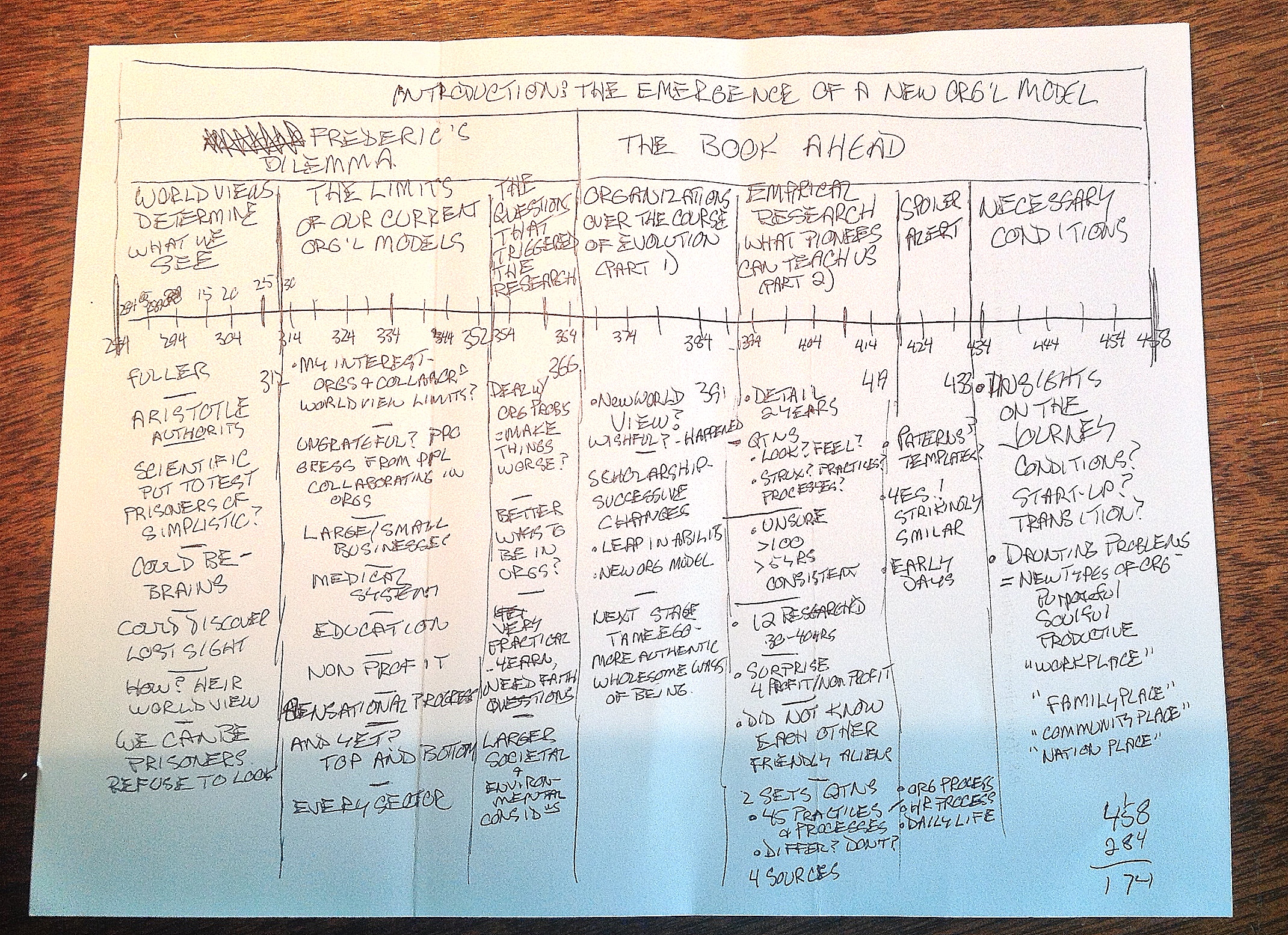Lets plan for tomorrow, Tuesday, May 13, 2014 say 6:00 pm Phoenix time for an hour, and we will go through the introduction and work out some way to cover the rest of the chapters. I plan to be available on line Tuesday, Wednesday and Thursday. Ahmed, this time is most awkward for you in Berlin. Suggest a time on Wednesday that would be good for you, so we can talk.
Just call 712-432-1212, and enter the meeting ID 630-021-158 followed by the # key. Those of you calling internationally can go on skype and dial the number that way. You may be able to dial in via your computer with screen sharing capacity, I just don’t know
6:00 to 7:00, option to chat afterwards
Agenda: Welcome
Look at our Study Group (see attached)
Go around of introductions. Name, Location, One thing interests you about the book
Brief study of the introductions section (see chart attached)
Conversation — How shall we proceed?
Who will take which chapters?
Next call?
Look forward to hearing from you all. Jim
REPORT ON THE CALL. John Epps, Steve Harrington, Marissa Theisen and Jim Wiegel talked through the first half of the introduction to Reinventing Organizations just a few minutes ago.
Wanna listen in? Have your copy of the book in front of you (also the chart at the top of this page) and click here to listen in! A bit of echo, not too bad . . .
Steve took notes. View them here.
Next call?
Next week — Tuesday, May 20th, 6 pm Phoenix time

Free Conference Call / Skype Session 1 May 13, 2014
Jim Wiegel, John Epps, Marissa Theisen, Steve Harrington
Welcome
James began at 6:10 with a
what has me interested in this book is
my experience of a facilitator working with organizations and how the leaders change everything changes, I am interested in structure and process that stick around.
Marissa in Phoenix, a CEO of a small non-profit. I’m interested in his application of the Ken Wilbur ideas.
John Epps from Denver; what interests me is his analysis of the malaise, the drudgery of work TGIF. If he describes another form of organization
Steve the end of the book
Chapter 1 Pieces: Aristotle, the number of teeth and 3 brains. In modern era only 1 brain a hierarchy emerges “the head” how can we lose sight; prisoners of a world view. Loc 312: the limits of our current organizational models, a not quite accurate world view
Could we have invented a more powerful….
the individual Einstein Steve Jobs; he says not individuals but individuals collaborating in organizations.
John And yet…the malaise…the current limits are stretched at the bottom…the Dilbert cartoons, miserable and pointless work; organization leaders are also quiet suffers. John: no meaning in work. Why is this group important to be with; this group; we’re glad to be with your bank because. The student’s assume the only purpose is to make money.
Marissa – in my organization there is a sense of purpose and mission in the non-profit world.
So…the next section 2 Questions: the way we work problems make things worse, is there a better way to be an organization 3 how does this relate.
John the book Built to Last; the 3rd chapter, purpose driven organizaitons Like Merck to cure river blindness at a great cost to the corporations. There are many organizations around that do have a profound purpose. I have students read Milton Friedman; the purpose of the the corporation is to make money for it’s stockholders. Seems like this is changing these days…connecting with a purpose that is larger than making money.
James The rest of the chapter is an overview and the stage of development in the Wilbur framework- that integral level of consciousness
The last section different structure and process and making 3 breakthroughs in self-management, striving for whole people at work, listening to evolving purpose.
Marissa in the cases, the leadership made the ship 1st. Can you do this without commitment at the top. Starting from scratch is another thing. 40,000 people operating in a new way in an organization according to Fredric.
Human Development projects in village so…human development in an organization.
James: I’m willing to host and connect people up including the 24 who wern’t here.
Enought talking and listening time 4
Maistro groups of 4 or 5
James on organizing participation
Small groups pick up Chapters Marissa and some others on Chapter 4 for example
Partners in Participation group – they want a May 28 face to face study
James Q: should people pick a chapter and pull out key points and share-out
We agreed to meet again at the same time in the same way
We stopped at the hour.
One of the key points in the introduction for me was Laloux’s statements about the role of people collaborating in organizations in shaping our world today. A quote: Could we invent a more powerful, more soulful, more meaningful way to work together, if only we change our belief system?
In many ways, this is a strange and almost ungrateful question to ask. For thousands and thousands of years, people have lived on the brink of famine and in fear of plagues, always at the mercy of a drought or a simple flu. Then suddenly, almost out of nowhere, modernity has brought us unprecedented wealth and life expectancy in the last two centuries. And all this extraordinary progress has come not from individuals acting alone, but from people collaborating in organizations: